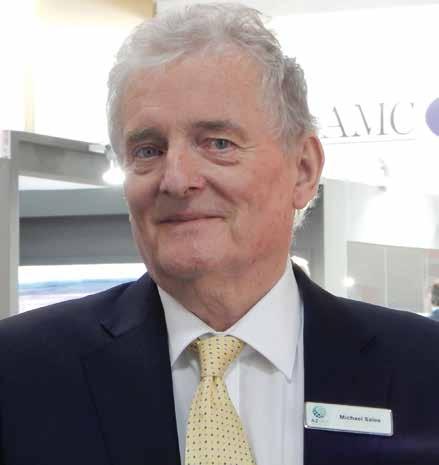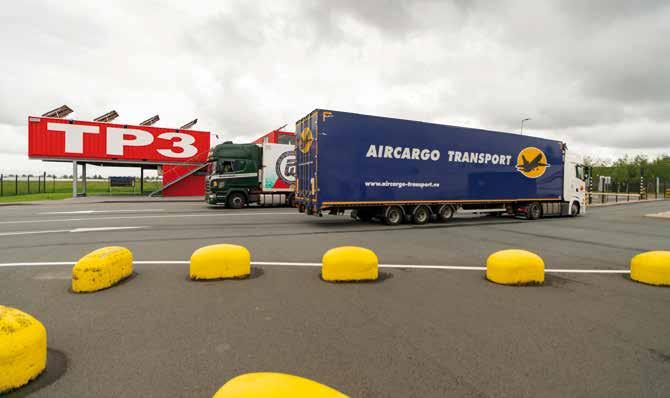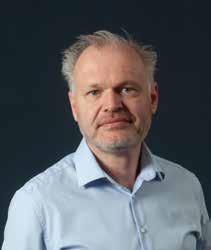
4 minute read
Schiphol transporters work on innovative concepts to improve efficiency in CATALYST
by Cargomedia
The Living Lab CATALYST – a public private partnership of over 40 partners from the business community, public authorities and knowledge institutes coordinated by TNO – was founded in 2019 to develop and accelerate Connected Automated Transport innovations for more sustainable, safer and more efficient heavy road transport.
Text en Photography Catalyst
Advertisement
In the CATALYST Living Lab we investigate these CAT applications, which create both societal value and an economic business case for heavy road transport. These include innovations enabled by improved connectivity and automation, such as Advanced Driver Assistance Systems (ADAS), truck platooning, Super EcoCombi (duo trailers), in-truck information (such as intelligent traffic lights (iVRIs)) and autonomous vehicles (such as smart dollies) for both enclosed areas and public roads. In CATALYST we work together to develop, evaluate, monitor and roll out valuable solutions.
Improving predictability and efficiency in the Schiphol case
Transport companies D.J. Middelkoop, Jan de Rijk and Transportbedrijf R. Nagel and logistical service provider DHL are involved in the Schiphol cluster in CATALYST. The practical issue that these parties jointly work on, together with the University of Twente and TNO, is how to improve the predictability and efficiency of arrivals and departures of large numbers of trucks for ground handlers. A well-known problem is the unpredictability of the arrival and departure of these trucks. Some transport companies report waiting times of up to five hours in the Schiphol area. This often results in congestion on the (public) roads at and near these locations, unreliability in the delivery or pick-up of freight, missed time slots in the next steps in the logistical chain (e.g. in the production process or transport by air), inefficiency and
increased emissions. The involved partners have a strong need to solve this problem to improve the logistical efficiency and sustainability.
Simulating innovative concepts to improve insight
The first step in the research conducted in CATALYST is to develop and simulate possible scenarios. The use of a simulation model enables us to experiment with various options to map safety, traffic flow, efficiency and sustainability.
The scenario that has our greatest interest combines increased connectivity, autonomous vehicles and a decoupling point. In this case, information is exchanged between transporters and handlers via improved connectivity to determine the priority of the handling. Based on this information, it is decided if a vehicle can proceed straight to the handler or if its freight should be decoupled at a so-called decoupling point. The lastmile transport between decoupling point and handler can be arranged with an autonomous (and electric) vehicle. The effects in terms of reducing congestion and waiting times are visualized with the simulations.
Trucking CDM, a platform that connects road feeders and handlers to improve efficiency, will also be involved in the near future. Based on the data present in the platform, we are able to simulate the current situation as realistically as possible. This is important as it also enables fair representation of possible future scenarios.
Living Lab CATALYST
Living Lab CATALYST focuses on applied as well as fundamental research. The Living Lab was started on the basis of initial funding from the Top Sector Logistics, the Ministry of Infrastructure and Water Management, TKI-Dinalog, NOW, Regieorgaan SIA and TNO. The Living Lab has been established to acquire multi-year knowledge on the development and rollout of safe, sustainable and efficient CAT innovations. CATALYST is a public-private partnership (PPS) with a balanced representation of the business community, public authorities and knowledge institutes. Over 40 CATALYST partners invest and research jointly. TNO is the founder and coordinator on behalf of the CATALYST Living Lab. If you would like to get more information on the CATALYST Living Lab or wish to join as partner, please visit www.catalystlab.nl.
Several use cases on autonomous vehicle concepts in CATALYST
In addition to the Schiphol use case, CATALYST also examines comparable issues in the Port of Rotterdam and North Sea Ports (Vlissingen) areas as well as the DPD Oirschot business park. Together, these applications are more than the sum of the parts: actively sharing information enables the involved parties to learn from each other. Thanks to the collaboration with PhD students of the University of Twente, Rotterdam School of Management and Eindhoven University of Technology we will not only make an impact in practice, but also contribute to scientific research.
Looking to the future: testing in practice
The simulation scenarios are just the starting point of the activities we are undertaking. Once we have gained insight in which combination of connectivity and automation measures leads to the desired results, we can move on to the next step: testing in practice. That is what CATALYST is working towards; concrete tests that contribute to improving the efficiency and sustainability of road transport. For example, in the recently awarded Green Deal Airports project TULIPS, which is led by Schiphol, a test with heavy electric trucks will be carried out on the basis of real-time data of vehicles and available docks and parking areas (connectivity).
More information
If you would like to get more information about the CATALYST Living Lab, or if you wish to become a partner, please visit our website. You will find the latest research results here and you can sign up for our newsletter.










